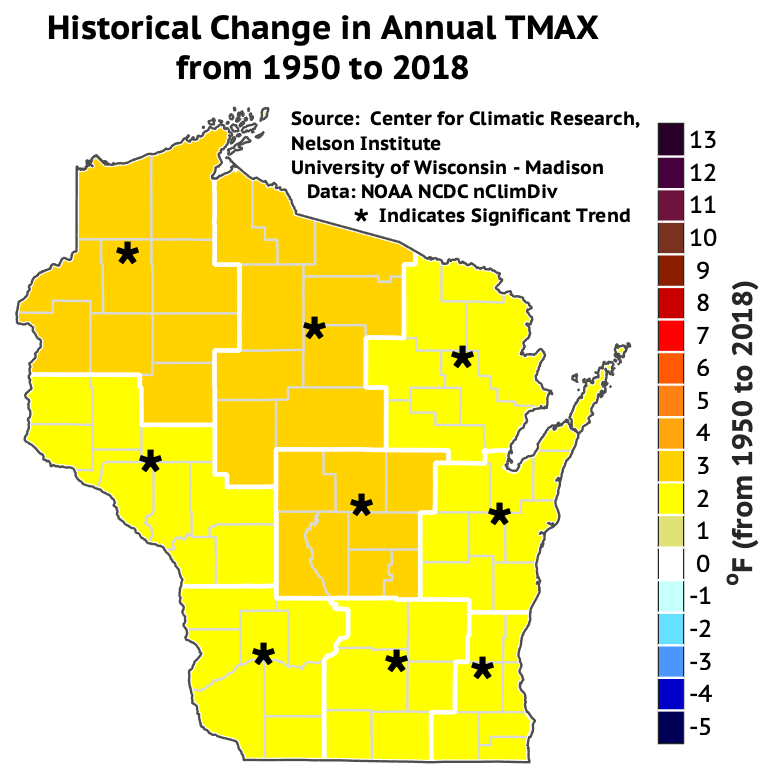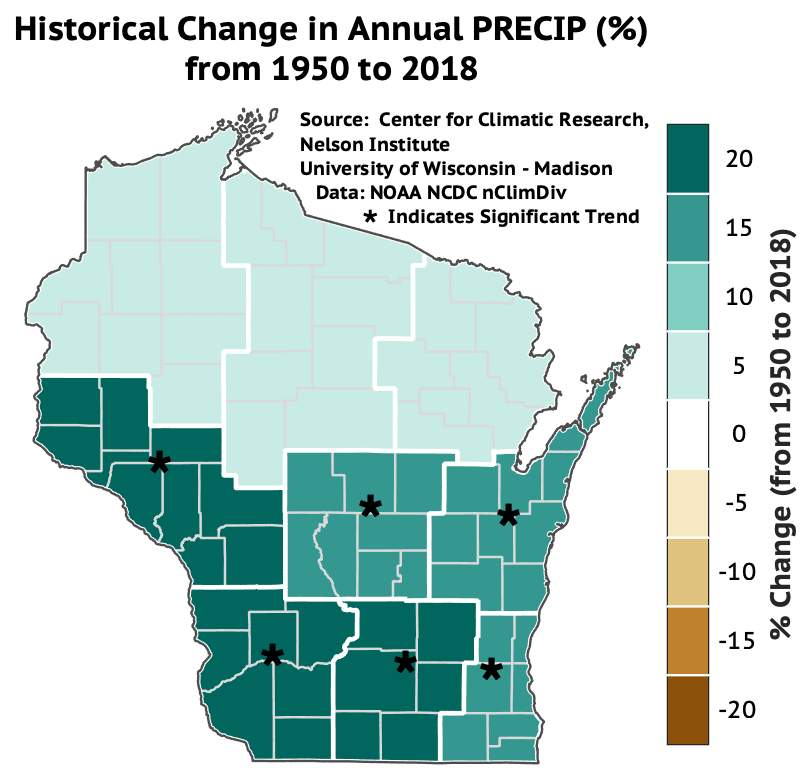
Bloom intensity is increasing worldwide.
Published in October 2019, a study in the journal Nature used three decades of high-resolution satellite imagery to investigate long-term trends in intense summertime, near-surface cyanobacteria and other phytoplankton blooms for 71 large lakes globally, including nine major U.S. lakes (Lake Winnebago, Lake Erie, Lake Saint Clair, Clear Lake, Great Salt Lake, Walker Lake, Lake Okeechobee, Teshekpuk Lake, and the Salton Sea). The study found that overall peak summertime bloom intensity during 1985–2010 increased in most (68%) of the lakes studied, revealing a global exacerbation of bloom conditions. While the study did not find a statistically significant trend in bloom intensity for Lake Winnebago, slight by-decade increases in summer water temperature and fertilizer use were observed.
In January 2020, the journal Harmful Algae published a special issue on harmful algal blooms (HABs) and climate change. The articles in this issue document evidence for a warming climate and for increased frequency and intensity of blooms worldwide.
What do we know about Wisconsin?
The Wisconsin Initiative on Climate Change Impacts, or WICCI, is an organization composed of scientists from the University of Wisconsin and the Wisconsin Department of Natural Resources who are studying and documenting climate effects on Wisconsin by looking at state data from 1950–onward. Here's what they have found:
- Wisconsin is warming.
- Wisconsin is getting wetter.
What does this mean for the future of HABs in Wisconsin? You might recall our February 2019 issue where we dove into the factors that promote cyanobacterial bloom formation. Cyanobacteria grow faster in warmer temperatures and plentiful sunlight, and they benefit from nutrient-rich runoff as a result of heavy rainfall and snowmelt.
As a 2019 WICCI case study suggests, if these trends continue through 2050 and beyond, we can expect the frequency and intensity of cyanobacterial blooms in Wisconsin to increase.
 Wisconsin is warming. Wisconsin's annual average temperature increased on average 2°–3°F statewide during 1950–2018.
 Wisconsin is getting wetter. Overall, the state experienced more rainfall during 1950–2018, with significantly wetter conditions in the southern half of the state.
The Health Connection
An increase in HAB frequency and intensity across Wisconsin would mean a greater likelihood that humans and animals would become exposed to and subsequently ill from high concentrations of cyanobacteria and cyanotoxins. A 2011 WICCI report on the impact of climate change on human health in Wisconsin acknowledges the increase in HABs and related illnesses, but also predicts other climate-related health effects, including:
- More heat-related hospital admissions.
- Poorer ambient air quality due to higher ground-level ozone.
- A rise in waterborne diseases from bacteria, parasites, and viruses due to flood events.
- A rise in certain vectorborne diseases, such as West Nile Virus.
Wisconsin Lakes and Rivers Convention
Registration is now open for the Wisconsin Lakes and Rivers Convention (formerly the Wisconsin Lakes Partnership Convention). This event has drawn together water advocates, scientists, managers, and educators from across the state annually since the 1980s. This year, the convention includes river stakeholders in an effort to embrace a full watershed approach to caring for Wisconsin waters. Additional highlights this year will include reflections on the Year of Clean Drinking Water and the work of the Speaker's Water Quality Task Force as well as addressing climate change in Wisconsin.
Gina LaLiberte, Blue-green Algae Coordinator at the Wisconsin Department of Natural Resources, and Amanda Koch from the Wisconsin Division of Public Health's HAB Program, will be leading a combined algae workshop and presentation on Wednesday, April 1.
When: April 1–3, 2020
Where: Holiday Inn Convention Center in Stevens Point
For more information and to register, visit the event website.
 |
|
Let's Get Social |
Suggested post and photo:
If you’re traveling somewhere warm for St. Paddy’s Day, don’t get UN-lucky with blue-green algae! If water looks like pea soup or is scummy, stay out and don’t let your kids or pets swim in it. Learn more: https://www.dhs.wisconsin.gov/water/bg-algae/index.htm

 |
|
Missed a past issue? Previous issues are available on our Resources for Health Professionals webpage.
Email us your burning questions! If others can benefit from hearing the answer to your question, we’ll feature it in a future issue.
Remember that we are always available for consultation on any HAB health-related issue by email or phone (608-266-1120).
|
|